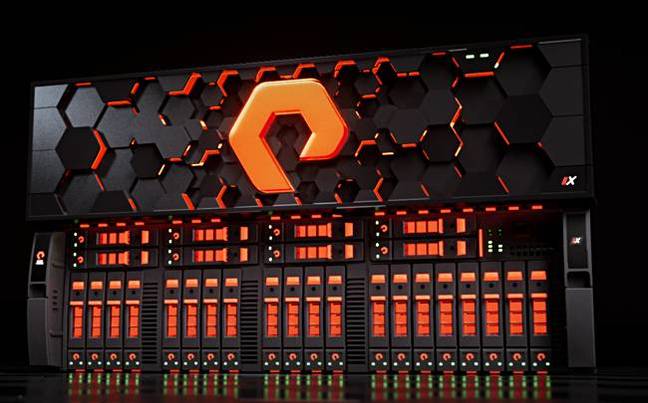Pure Storage has flagged a major announcement on September 28th. A financial analysts’ briefing is scheduled to follow the announcement, suggesting news that will affect investors’ views of Pure’s future revenues, costs and underlying profitability measures. The company is saying the announcement is about AIOps, the future of storage, storage and DevOps product innovations, and its as-a-Service offerings. What could it announce that could cause analysts to take stock and form a different view of the company?
We ignored the AIOps aspect, as that would be a fairly incremental move, and came up with a list of potential developments:
- Hardware array refreshes;
- FlashBlade software into the cloud (file, object);
- Cloud Block Store into GCP;
- Cloud Block Store to have added file and object support;
- Putting Purity in the public cloud;
- Making Purity OS cloud-native;
- Abandon hardware manufacturing;
- Use commodity SSDs;
- Deal with AWS, Azure or GCP like NetApp deal with AWS;
- Pure-as-a-Service expansion a la Zadara;
- Spot-like functionality.
Hardware array refreshes would be good. Using the latest Xeon processors, for example, supporting PCIe gen-4, that sort of thing — but they would hardly move the needle for financial analysts. Possibly committing to support DPUs from Pensando or Fungible might do that. Still, not exactly that much impact on a financial analyst’s twitch-ometer.
Porting FlashBlade software to one or more public clouds would seem both logical and good sense. It would be additive to the FlashBlade market — and we think analysts would concur, nod approvingly and move on. Ditto porting Cloud Block Store to the Google Cloud Platform. Expansion into adjacent market? Tick. Stronger competition for NetApp data fabric idea? Tick. What’s not to like? Nothing. Move on.
Adding file and block support to Cloud Block Store? Trivially there would be a naming problem: do we call it Cloud Block File Object Store? It would seem a logical extension of Pure’s public cloud capabilities and an improvement in the cross-cloud consistency of Pure’s hybrid cloud story. We can’t imagine analysts would see a downside here.
It could be achieved with another strategy: make the Purity OS software cloud-native and have it run un the public clouds. That would be a big deal with a common code tree and four deployment layers: on-premises arrays, AWS, Azure and GCP. It would be a large — very large — software effort and give Pure a great hybrid cloud story with lots of scope for software revenue growth. Cue making sure the analysts understand this. An AIOps extension could be added in to strengthen the story as well.
How about doing a Silk, Qumulo or VAST Data, and walking away from hardware manufacturing — using a close relationship with a contract manufacturer/distributor instead and certified configurations? Thus would be a major business change, and both analysts and customers would want reassuring that Pure would not lose its hardware design mojo.
A lesser hardware change would be to use commodity SSDs instead of Pure designing its own flash storage drives and controllers. Our instant reaction is a thumbs down, as Pure has consistently said its hardware is superior to COTS SSD vendors — such as Dell, HPE and NetApp — because it optimises flash efficiency, performance and endurance better than it could if it was limited by SSD constraints.
Such a change would still get analysts in a tizzy. But we don’t think it likely, even if Pure could pitch a good cost-saving and no-performance-impact story.
How about a strategic deal with a public cloud vendor similar to the AWS-NetApp FSx for ONTAP deal? That would indeed be a coup — having, say, Pure’s block storage available alongside the cloud vendor’s native block storage. We don’t think it likely, though it has to be on the “possibles” list.
Expanding the Pure-as-a-Service strategy to include all of Pure’s products would be an incremental move and so no big deal to people who had taken the basic idea on board already. Analysts would need a talking-to perhaps, to be persuaded that this was worth doing in Annual Recurring Revenue growth terms. This could be thought of as Pure doing a me-too with HPE’s GreenLake and Dell’s APEX strategies.
How about Pure acting as a cloud access broker and front-end concierge supplier, rather like NetApp with its Spot-based products? That would be big news and require new software and a concerted marketing and sales effort. AIOps could play a role here too. Our view, based on gut feelings alone, is that this is an unlikely move — although it would be good to see NetApp getting competition.
We are left thinking that the likeliest announcements will be about making more of Pure’s software available in the public clouds, plus an extension of Pure’s as-a-Service offerings and a by-the-way set of hardware refreshes. We’ll see how well our predictions match up with reality on September 28 and mentally prepare for a kicking just in case we are way off base.








